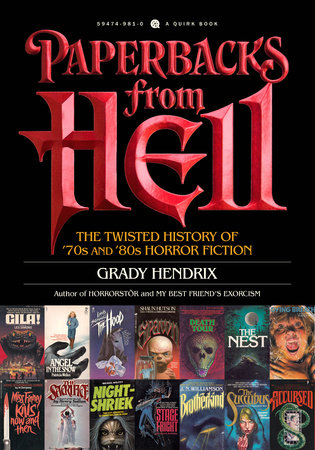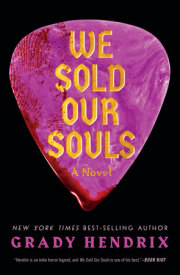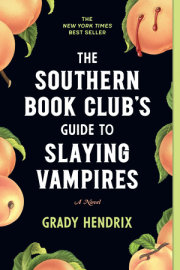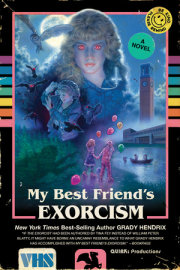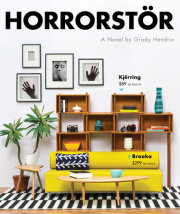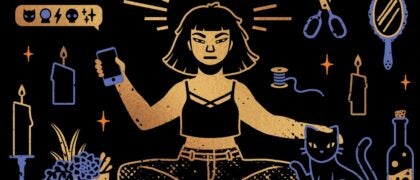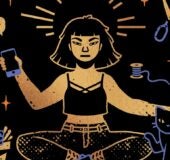Introduction
Years ago at a science-fiction convention, I was flipping through the dollar boxes at a dealer’s table when this Hector Garrido cover for
The Little People brought my eyeballs to a screeching halt. I wasn’t a book collector— I didn’t even know who Hector Garrido was—but I knew what
this was: the Mona Lisa of paperback covers. I bought it so fast my fingers blistered. I never expected to actually read the book . . . but three months later, I fished it out of my “To Be Read” pile and cracked it open.
I knew John Christopher’s name from his Tripods science-fiction series, which had been serialized as a comic strip in the back of
Boys’ Life magazine. But this 1966 Avon novel was stronger stuff. In it, a gorgeous secretary inherits an Irish castle from a distant relative and converts it into a B&B to show her patronizing lawyer/fianc. that she can stand on her own. On opening weekend, the house is full of guests: an Irish dreamboat alcoholic, two bickering Americans with a hot-to-trot teenage daughter, and a married couple who met in a concentration camp, where he was a guard and she was a prisoner.
But some uninvited guests are lurking in the basement: the Gestapochauns.
The Gestapochauns live in the dark, battling their ancient rat enemies with teeny bullwhips. Shortly after we meet them, the author lets us know that these are not just any Nazi leprechauns. These are psychic Nazi leprechauns who enjoy S&M, are covered with scars from pleasure/pain sessions with their creator, were trained as sex slaves for full-sized human men, and are actually stunted fetuses taken from Jewish concentration camp victims. And one of them is named Adolph.
While all this information is being hosed into the reader’s eyes like a geyser of crazy, this book rockets from 0 to 60 on the loony meter and overdelivers on practically every level. From the moment the Gestapochauns play a mean practical joke on the old Irish washerwoman who works in the kitchen to the moment that the lawyer/fianc. realizes exactly what the Nazi leprechaun named Greta is up to in his pants, it’s one fifty-page freakout that’s firing on every cylinder.
Sadly, the Gestapochauns are completely absent from the last thirty pages of the book. The author devoted the remaining pages to a discrete psychic battle that takes place in the dreams of the non-psychic, non-Nazi, non-leprechaun members of the cast. In other words, the Boring People. Yet Christopher and his Gestapochauns fly so high and so far in those middle passages that they practically touch the sun.
No matter what book I read next, the Gestaopchauns clung to my gray folds, whispering to me in my sleep:
What else has been forgotten? After some latenight googling brought me to Will Errickson’s
Too Much Horror Fiction blog, I blacked out. One year later, I woke up squatting in the middle of an aisle at Sullivan’s Trade-a-Book in the heart of South Carolina, surrounded by piles of musty horror paperbacks. Apparently I was buying them. Apparently I was reading them. Apparently I was addicted.
The books I love were published during the horror paperback boom that started in the late ’60s, after
Rosemary’s Baby hit the big time. Their reign of terror ended in the early ’90s, after the success of
Silence of the Lambs convinced marketing departments to scrape the word
horror off spines and glue on the word
thriller instead. Like
The Little People, these books had their flaws, but they offered such wonders. When’s the last time you read about Jewish monster brides, sex witches from the fourth dimension, flesh-eating moths, homicidal mimes, or golems stalking Long Island? Divorced from current trends in publishing, these out-of-print paperbacks feel like a breath of fresh air. Get ready to meet some of my new favorite writers: Elizabeth Engstrom. Joan Samson. Bari Wood. The Lovecraftian apocalypse of Brian McNaughton. The deeply strange alternate universe of William W. Johnstone. Brenda Brown Canary, whose
The Voice of the Clown is one of the few books to actually make my jaw drop. You’ll hear the dark whisperings of Ken Greenhall, the gothic Southern twang of Michael McDowell, the clipped British accent of James Herbert, the visionary chants of Kathe Koja, and the clinical drone of Michael Blumlein.
The book you’re holding is a road map to the horror Narnia I found hidden in the darkest recesses of remote bookstores—a weird, wild, wonderful world that feels totally alien today, and not just because of the trainloads of killer clowns. In these books from the ’70s and ’80s, doctors swap smokes with patients while going over their ultrasounds, housewives are diagnosed as having “too much imagination,” African Americans are sometimes called “negroes,” and parents swoon in terror at the suggestion that they have a “test tube baby.”
These books, written to be sold in drugstores and supermarkets, weren’t worried about causing offense and possess a jocular, straightforward, “let’s get it on” attitude toward sex. Many were published before the AIDS epidemic, at the height of the Swinging ’70s, and they’re unapologetic about the idea that adults don’t need much of an excuse to take off their clothes and hop into bed.
Though they may be consigned to dusty dollar boxes, these stories are timeless in the way that truly matters: they will not bore you. Thrown into the rough-andtumble
marketplace, the writers learned they had to earn every reader’s attention. And so they delivered books that move, hit hard, take risks, go for broke. It’s not just the covers that hook your eyeballs. It’s the writing, which respects no rules except one: always be interesting.
So grab a flashlight and come wander down these dark aisles. The shelves are dusty, the lighting is dim, and there’s no guarantee you’ll come back unchanged or come back at all. All you need is a map and you’re ready to take a tour of the paperbacks from hell.
Copyright © 2017 by Grady Hendrix. All rights reserved. No part of this excerpt may be reproduced or reprinted without permission in writing from the publisher.





